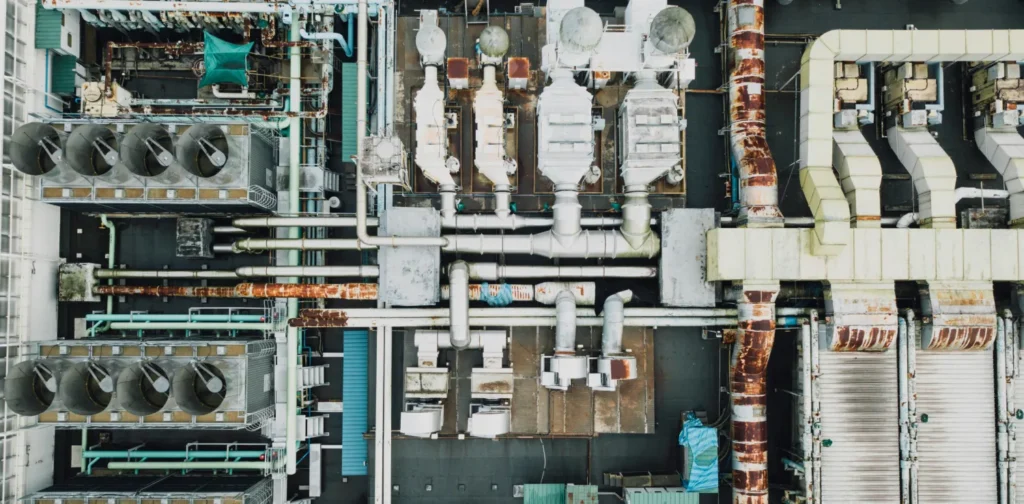Looking into Industrial Symbiosis Practices for Bioenergy Sourcing

Photo by CHUTTERSNAP on Unsplash
As global heating reaches unprecedented levels, the world is aiming for widespread energy transition. One of the promising alternatives is biomass energy from natural resources. However, a transition at scale to harnessing biomass energy requires sustainable sourcing so we do not further harm the planet. In this light, industrial symbiosis practices may offer a solution.
Sourcing Dilemma
Biomass energy materials are commonly sourced from plants, woods, and waste. In recent years, the demand for biomass energy sourced from plants and trees has grown substantially. For instance, between 2021 and 2023, the number of imported wood pellets from Indonesia to South Korea and Japan jumped from 49.8 tonnes to 68,025 tonnes, and 54 tonnes to 52,734 tonnes, respectively. To meet the needs of large-scale production, deforestation seems to be inevitable. In 2023 alone, around 1,000 hectares of forests in Gorontalo, Indonesia, were logged for wood pellet exports.
At the same time, the bioenergy source from plants can lead to monoculture plantations, which is also a common reason behind deforestation. A study showed that in the long term, sugarcane monoculture can reduce soil quality, hydrological functions, and agrobiodiversity. These conditions disrupt overall crop productivity.
Considering the environmental damage of both sourcing options, some researchers suggest focusing on using waste. However, the availability and sustainability of this sourcing are still highly questionable. Industrial waste, especially biomass waste, can be the alternative to meet the large-scale source. A compatible system is needed to make it work.
Industrial Symbiosis as a Solution
Industrial symbiosis could be the option for waste-to-energy practices. In general, industrial symbiosis is the use of underutilized resources (including waste, by-products, and residues) of one factory as another factory’s raw materials and sharing infrastructure. This framework enables industrial waste to be processed without high transportation costs and land conversion. It is also potentially cost-effective, since businesses do not have to manage their own waste and may even create a new revenue from it.
The practices of industrial symbiosis have been successfully implemented in several countries through linking various industries in nearby areas. Some examples include:
- Kalundborg, Denmark: residual biomass from Novozymes and Novo Nordisk (yeast slurry) is turned into biomethane, which is then sent to local companies and to retail consumers through the national gas grid.
- The Rizhao Eco-industrial Park, China: pulp and paper factory received scrap wood from a wood factory and turned it into wood chips, which are then processed into charcoal products.
Implementing industrial symbiosis practices as the alternative of bioenergy sourcing from waste has been successful in several cases. This indicates that industrial symbiosis can offer a solution to the biomass energy sourcing dilemma.
Still, the compatibility of waste and the production scale should be studied further as the potential will vary from one industry to another. Industries must also work together to create an enabling environment and infrastructure to support the transition toward cleaner energy and circular economy. After all, sustainable development efforts cannot exist in silo; they require innovative cross-sectoral collaborations from governments, businesses, and civil society for the wellbeing of people and the planet.
Editor: Nazalea Kusuma

Join Green Network Asia Membership
Amidst today’s increasingly complex global challenges, equipping yourself, team, and communities with interdisciplinary and cross-sectoral insights on sustainability-related issues and sustainable development is no longer optional — it is a strategic necessity to stay ahead and stay relevant.
Join Now

 Weaving the Thread Between the Last Elephant and the Floods in Sumatra
Weaving the Thread Between the Last Elephant and the Floods in Sumatra  Bringing Buried Rivers Back to Life Through Daylighting
Bringing Buried Rivers Back to Life Through Daylighting  Prescribing Beyond Profit for CEOs’ Anxiety
Prescribing Beyond Profit for CEOs’ Anxiety  An Interview with May Tan-Mullins, CEO and Provost of University of Reading Malaysia
An Interview with May Tan-Mullins, CEO and Provost of University of Reading Malaysia  An Interview with Eu Chin Fen, CEO of Frasers Hospitality
An Interview with Eu Chin Fen, CEO of Frasers Hospitality  The UK Government’s Funding Package Plan to Tackle Youth Unemployment
The UK Government’s Funding Package Plan to Tackle Youth Unemployment